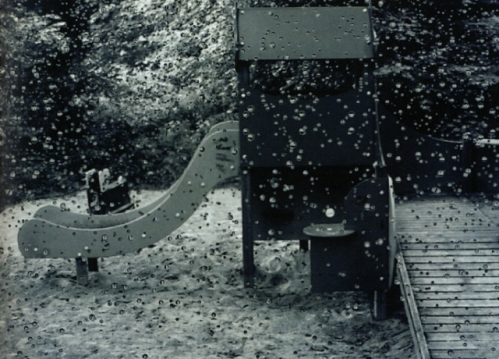Digitising Contemporary Art Project Reaches Aggregation Phase
Linda Veinberga, Dissemination Officer for DCA, tells us what the project is all about and how it has already exceeded all expectations.
Digitising Contemporary Art (DCA) is a 30-month project, digitising art created after 1945. By June 2013 it will have made central parts of the collections of 21 European art institutions available online. The collections include paintings, sculptures, photographs, video, drawings, prints, collages and book art.

Pat Andrea: Returning from Greece (1965), oil on canvas, 108x150cm (c) Frissiras Museum, Athens, Greece.
Around 27,000 artworks and 2,000 contextual documents are being digitised to create high quality digital reproductions drawing upon the know-how of 4 experienced technical partners and using the best practices in digitisation, metadata implementation and long-term preservation.
The project has sucessfully reached its aggregation phase now and the digitised content and metadata will soon be integrated into Europeana, thus adding a contemporary art content still largely missing on Europeana's database.Stephan von Huene: Untitled, from the series Mind Maps (1987), pencil on paper, collection of Dr. Petra Kipphof von Huene, digitised at the Staatliche Hochschule für Gestaltung Karlsruhe, Germany.
The project has undergone several phases:
During the first period lasting six months (January-June 2011), the project consortium carried out an extensive assessment of the status of the collections and the very different situations of each content partner. This allowed for the establishment of a digitisation framework for the whole project, based on best practices, expert knowledge and technical support. Subsequently, each content provider created an individual digitisation plan, detailing the targeted quality and schedule of identified content segments along the trajectory of the digitisation workflow. Only after the planning phase did the actual digitisation start (July 2011) and it has since been a work-in-progress.
When we reached the halfway mark in spring 2012, the achieved results exceeded all expectations. Around 30% more items than anticipated had been digitised (12,834 items, including artworks of, for instance, Barry Flanagan, Stephan von Huene, Atelier Van Lieshout, Claes Oldenburg). 12,508 of these digitised items were already recorded in the partners’ collection management system with the appropriate metadata. This was three times more than expected for the period. By April, 2,632 items had already been placed online on the respective content partners' websites.

Tamás Waliczky: Landscape (1998), Awarded Distinction at Prix Ars Electronica 1998 in the category Computer Animation/Visual Effects, the archive of Ars Electronica Linz GmbH, Austria.
Parallel to the digitisation process, workshops were held to offer in-depth introductions to metadata schemes, file formats and codec standards, XML exports, vocabularies, long-term preservation tools and strategies, aggregation procedures and copyright issues. Guidelines based on the experience and assessment of the best and successful practices in terms of digitisation and preservation strategies have been published to the benefit of other professionals in the field and interviews with the staff working for content providers give a concrete insight into issues of creating digital collections.
More information
Deliverables, project-related documents, interview transcripts and other information can be found on the DCA website
Follow us on Twitter: @DCA_project
Read interviews with content partners
